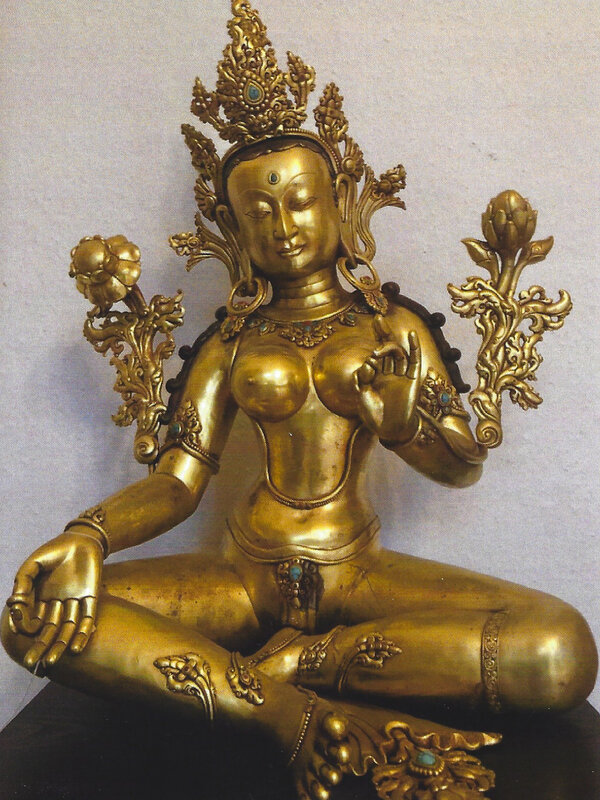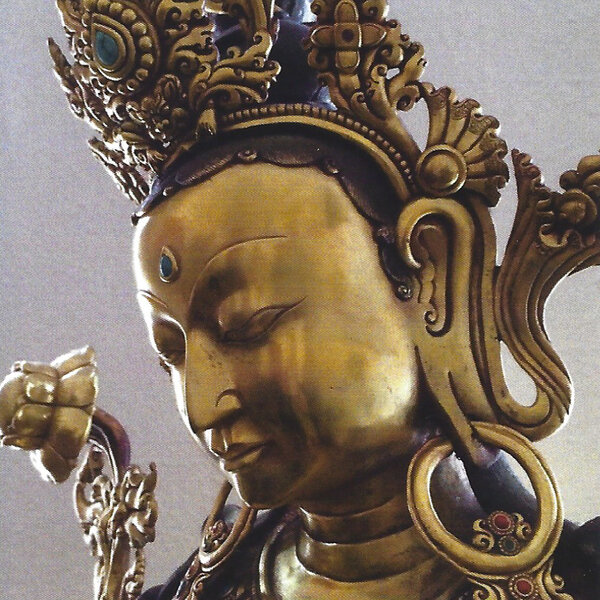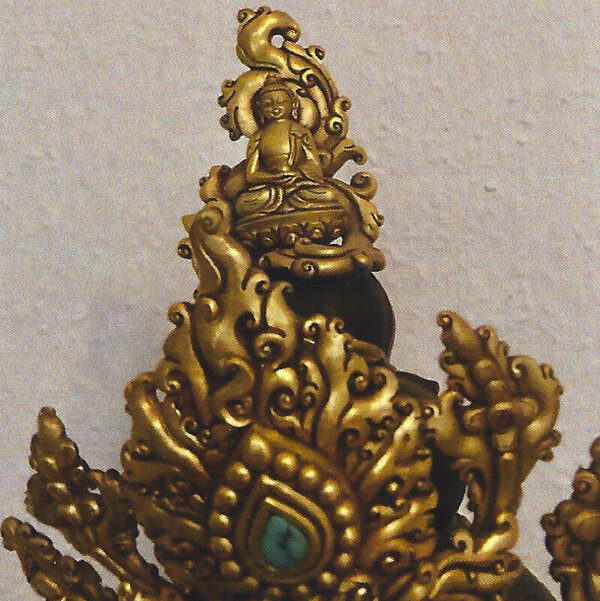Tara is primarily shown in two manifestations in Tibetan art: as White Tara she is a symbol of purity, and as Green Tara she is seen as a protector from all dangers.
There are many different manifestations of Tara, varying in colour, pose and features.
The Green Tara is not merely a protector against external dangers; she also notably protects against the dangers that arise from the spiritual poisons of pride, ignorance, hatred, envy, jealousy, greed, lust and doubt, which, if not overcome, will keep a person in the cycle of rebirth.
This depiction of the Green Tara is without a lotus pedestal.
The right hand shows the granting gesture Varadamudra (gesture of conferring boons) and the left hand the encouraging gesture Abhaya (gesture of giving assurance). In both hands she holds a lotus flower. As in this case, the manifestations of the Green Tara sit semi-closed (Ardhaparyanka), i.e. the left leg is pulled flat and the right leg is bent forward. The right foot turned forward is a sign that the Green Tara is always ready to help.
What is impressive about this statue is its charisma. The Bodhisattva crown and the lotus flowers are beautifully finished. A special feature of this statue - usually only found in depictions of the Bodhisattva Avalokiteshvara - is the delicately crafted representation of the Buddha Amitabha on the Ushnisha (the protuberance at the back of Buddha's head).



